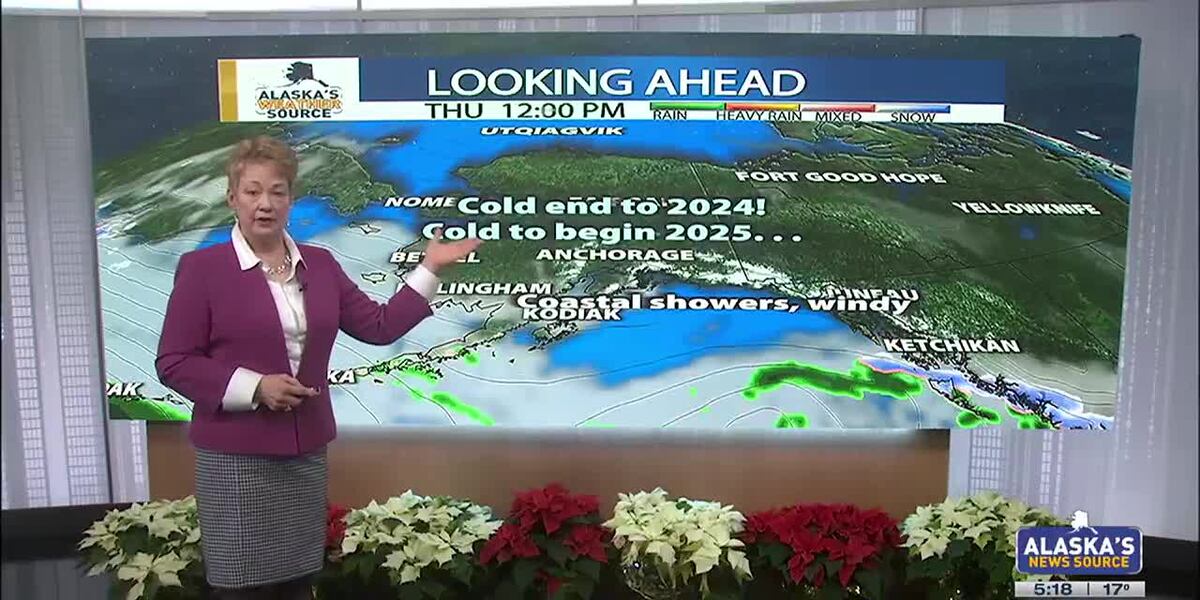Barring last-minute write-in campaigns, the field is set for 50 legislative races that will help determine majority control of the Alaska House and Senate next year.
The Alaska Division of Elections certified August’s primary election results on Sunday. All 40 seats in the Alaska state House will be on the general election ballot, alongside 10 of 20 seats in the Alaska Senate.
The withdrawal deadline for November’s general election passed on Monday. In total, 11 legislative candidates withdrew, including nine Republicans, one independent and one member of the Alaska Independence Party. Several GOP candidates had pledged to withdraw if they weren’t the top-placed Republican after the primary election.
Republican Reps. Tom McKay and Jesse Sumner dropped out last week. Sumner said he wanted to spend more time with his family. Mckay said he withdrew to give former GOP Rep. Liz Vazquez a better chance against Democratic Sen. Matt Claman for a South Anchorage Senate seat.
Under Alaska’s voting system, the top four vote-getters in the primary, regardless of party affiliation, can advance to the ranked choice general election. All but one legislative race has fewer than four candidates.
Thirty-nine of 50 legislative races are contested. Nine incumbent lawmakers are running unopposed. The deadline for certified write-in candidates to file a letter of intent with the Division of Elections is Oct. 31.
The Senate
The Alaska Senate currently has a 17-member, bipartisan supermajority with nine Democrats and eight Republicans. Three senators who are not members of the majority are Republican hardliners.
There are several races that could be key for whether Republicans can form a Senate majority in their own right next year, or if a bipartisan caucus maintains a majority. One key seat is Senate District R, which encompasses much of the Interior. Long-time GOP Sen. Click Bishop announced that he would not run for reelection in May while hinting at a future run for the governor’s office.
Savannah Fletcher, an attorney and member of the Fairbanks North Star Borough Assembly, is running for the open Senate seat. She finished in second place after the primary with just over 42% of the vote. Fletcher’s main opponent, Tok Republican Rep. Mike Cronk, finished first, 112 votes ahead of Fletcher.
In an interview, Fletcher said that education and protecting Interior fisheries were key priorities. Cronk voted to sustain Gov. Mike Dunleavy’s veto of a bipartisan education package in March. Fletcher said that was a key point of difference between her and Cronk. In an interview, Fletcher said she would join a bipartisan majority.
Cronk said he would prefer to join a Republican majority, but that he didn’t know if there were “truly enough” Republicans who could win and take control of the Senate. On education, Cronk, a former teacher, said he supported finding the right funding level so schools could move forward.
”It’s not about writing a blank check. It’s about, actually, what are we going to do to increase our outcomes with kids?” Cronk said.
James Squyres, a registered Republican, withdrew from the race in recent days. He finished in third place after August’s primary with 8% of the vote. Bert Williams, an Alaska Independence Party candidate, finished in fourth with 6%. Williams will appear on November’s ballot.
Another key Senate seat is for the upper Kenai Peninsula. First-term GOP Sen. Jesse Bjorkman is running against conservative Republican Rep. Ben Carpenter. Bjorkman was ahead of Carpenter by 264 votes after the primary.
Wegener has reported raising no money on state disclosure forms. She did not respond to a request for comment. Alaska Independence Party candidate Andy Cizek withdrew after finishing with under 3% of the primary vote.
Bjorkman said Wegener is “a total plant” who supported Carpenter, a more conservative Republican, during the last election.
“There’s a clear reason why she’s in the race, and that’s to try to take votes away from me,” Bjorkman said in an interview last week.
Alaska Democratic Party Chair Lindsay Kavanaugh said it appeared that several candidates were running as Democrats without supporting the Democratic Party platform, particularly in districts favored by moderate candidates or those who favor bipartisan coalitions.
Kavanaugh said voters seeking to support candidates who align with the Democratic Party platform should check the party’s website for a full list of candidates endorsed by the party. That list does not include Wegener. Nor does it include Lee Hammermeister, an Eagle River candidate running as a Democrat against Sen. Kelly Merrick, who belongs to the bipartisan majority. Merrick also faces Republican challenger Jared Goecker, who has said he seeks to form a Republican-only majority in the Senate.
Merrick finished first in the primary, with nearly 34% of the vote and 85 votes more than Goecker received. Hammermeister had nearly 15% of the vote. Two other conservative Republicans dropped out of the race and endorsed Goecker.
In both the Eagle River and the Kenai Peninsula Senate seats, the Democrat in the race could siphon votes away from the moderate Republican, in turn strengthening the position of the conservative Republican in the race.
Kavanaugh said it’s a sign that the Alaska Republican Party continues to struggle with embracing ranked choice voting, an election system that will be used in the general election and that itself will be before voters in November, in the form of a ballot question asking whether voters would like to keep the system that itself was adopted by ballot question in 2020.
Alaska Republican Party leaders have vowed to support the repeal effort, lamenting the loss of control they had under the previous closed primary system, which allowed only registered Republicans and nonpartisan voters to choose Republican candidates in the primary.
If the repeal effort is successful, the Alaska Republican Party would have the ability to limit voting in the Republican primary only to registered Republican voters. Nonpartisans and independents make up around 60% of Alaska voters.
The House
Education could also prove to be a critical issue for a closely-watched Homer House race. Rep. Sarah Vance, a conservative Republican and three-term incumbent, is being challenged by nonpartisan candidate Brent Johnson, who is president of the Kenai Peninsula Borough Assembly.
Vance finished first in the primary with 43%, ahead of Johnson on 34%. Alana Greear, an independent, finished third with 17%, and Dawson Slaughter, a Republican, finished fourth with 6%.
On Sunday, Greear announced she was withdrawing and endorsing Johnson. Greear, a teacher, said that her priority was “unseating Vance,” and that Johnson’s views aligned with hers on managing fisheries and increasing the Base Student Allocation, the state’s per-student funding formula for schools.
“I want to increase the BSA. So that is the reason I got in the race,” Johnson said in a Monday interview. “And that’s a big dividing point between me and Rep. Vance.”
If the general election results mirror the primary, the combined vote for Johnson and Greear could defeat Vance using ranked choice voting. But political strategists have warned that primary results were not a reliable marker for electoral success in November. Turnout at August’s primary election came in at 18%. Substantially more voters are expected to cast a ballot on Nov. 5.
The Alaska House is controlled by a 23-member, largely GOP majority, which includes 19 Republicans, two Democrats and two independents. The 16-member minority caucus has mostly Democratic members. Republican Rep. David Eastman, a hard-right Wasilla Republican, is not a member of either caucus.
Next year’s House majority could be decided by a handful of seats. In Anchorage, close races are expected between former GOP Sen. Mia Costello and Democrat Denny Wells, and Republican Rep. Stanley Wright and Democrat Ted Eischeid in a rematch for a swing East Anchorage seat.
A North Slope House seat could see a tough race for incumbent Rep. Thomas “Ikaaq” Baker, a Kotzebue independent appointed by Gov. Mike Dunleavy last November. He finished third in the primary 29% of the vote against Democratic challengers Saima “Ikrik” Chase on 36% and Robin “Niayuq” Burke on 35%.
Republican Jeremy Bynum could flip a Ketchikan House seat after finishing in the primary with 49% of the vote. The seat was held by long-time independent Rep. Dan Ortiz, who caucused with Democrats. Grant EchoHawk finished with 27%, ahead of fellow independent Agnes Moran on 24%. Other key House contests include:
• An open Interior House seat with Cronk running for the Senate. The four-way race sees Democrat Brandon “Putuuqti” Kowalski facing Republicans Rebecca Schwanke, Pamela Goode, and Libertarian James Fields. GOP candidates Cole Snodgress and Dana Mock withdrew in recent days.
• Ky Holland, an independent, is running for an open South Anchorage House seat. He finished first in the primary with 42%, and is facing off against Republican Lucy Bauer. GOP candidates Brandy Pennington and Lee Ellis recently withdrew. Pennington endorsed Bauer, who finished in second in the primary on 21%. Ellis endorsed Holland.
• In Fairbanks, Democratic Rep. Maxine Dibert will again face former Republican Rep. Bart LeBon. Dibert was ahead by 64 votes in the primary. LeBon won his first election to the House by one vote in 2018.
There are seven open House races with no incumbent legislator. One House district in the Turnagain area in Anchorage has no incumbent after Democratic Rep. Jennie Armstrong announced she was not running for reelection. Carolyn Hall is facing off against independent Nick Moe to replace Armstrong.
Moe finished behind Hall in the primary with 38% of the vote. He announced last week on social media that he was withdrawing and he congratulated Hall. But Carol Beecher, director of the Division of Elections, said by email that Moe didn‘t filed his signed withdrawal paperwork by the state deadline.
By text message, Moe said that there was a “mix-up” at the division. He said that nothing had changed: “I’m still not campaigning and am supporting Carolyn Hall.”
The deadline for Alaskans to register to vote or update their voter registration is Oct. 6. Voting in the general election will end Nov. 5.
• • •

:quality(70)/cloudfront-us-east-1.images.arcpublishing.com/adn/MCIGYDM7JJBLZE3CNMDHIFKLTU.jpg)
:quality(70)/cloudfront-us-east-1.images.arcpublishing.com/adn/ABQMRJMUPFB7BPUFDNPR5GIS5I.JPG)
:quality(70)/cloudfront-us-east-1.images.arcpublishing.com/adn/YDUZRVHHBJF6XETBNOLMGVGE6U.JPG)
:quality(70)/cloudfront-us-east-1.images.arcpublishing.com/adn/QX2NCZW3BZESHGR5PZIWOAEM5M.JPG)
:quality(70)/cloudfront-us-east-1.images.arcpublishing.com/adn/CAZ7KDLXYJFMNICMGFLTHE2MOA.jpg)



/cdn.vox-cdn.com/uploads/chorus_asset/file/25810760/1374361318.jpg)













/cdn.vox-cdn.com/uploads/chorus_asset/file/25672934/Metaphor_Key_Art_Horizontal.png)



/cdn.vox-cdn.com/uploads/chorus_asset/file/24982514/Quest_3_dock.jpg)


